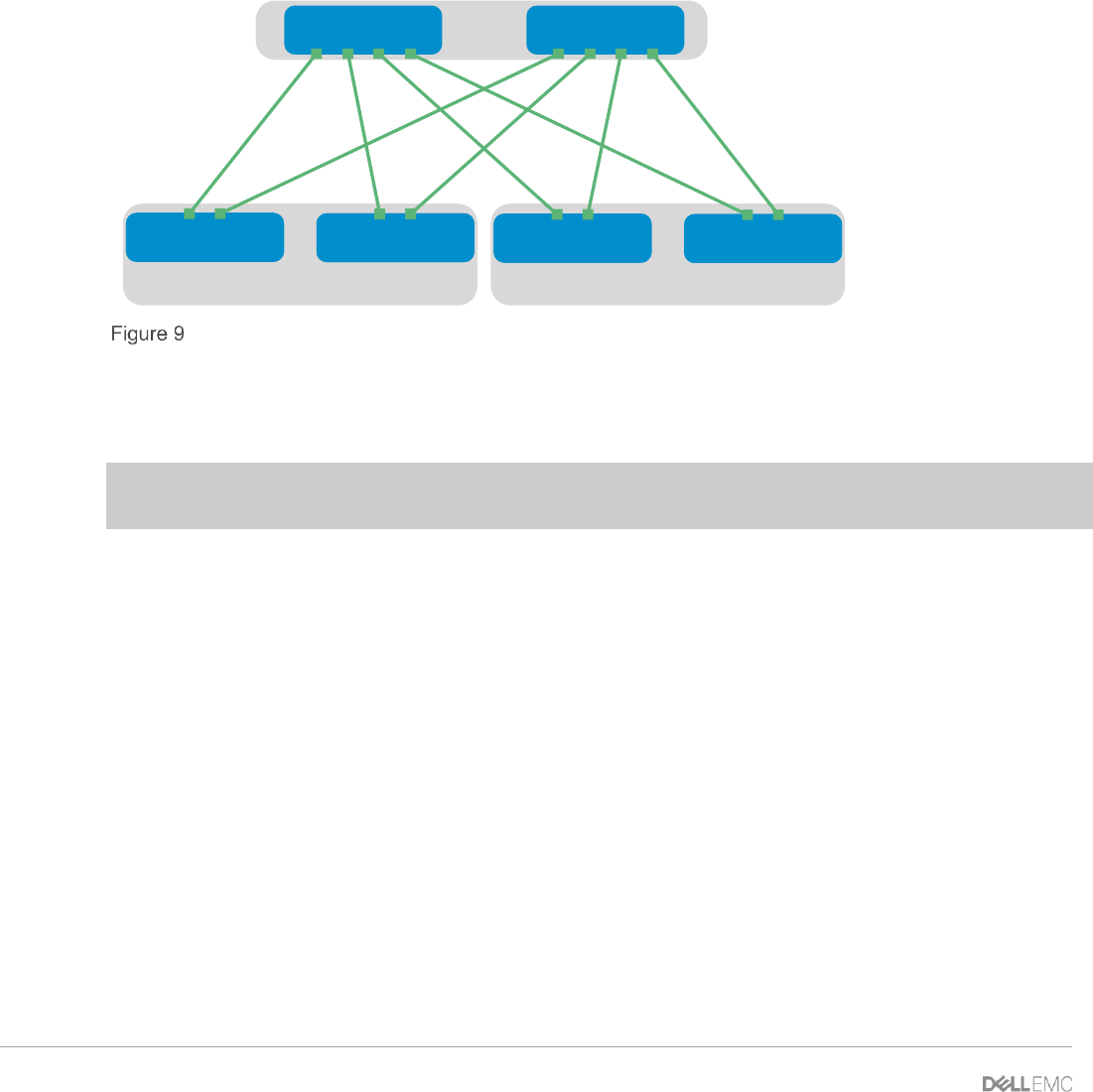Deployment Guide
Table Of Contents
- 1 Introduction
- 2 Hardware overview
- 3 Leaf-spine overview
- 4 Protocols used in the leaf-spine examples
- 5 Layer 3 configuration planning
- 6 Example 1: Layer 3 with Dell EMC leaf and spine switches using OSPF
- 7 Example 2: Layer 3 with Dell EMC leaf and spine switches using eBGP
- A Dell EMC Networking ONIE switch factory default settings
- B Validated hardware and operating systems
- C Technical support and resources
- D Support and Feedback

13 Dell EMC Networking Layer 3 Leaf-Spine Deployment and Best Practices with OS10 | Version 1.0
Internal Use - Confidential
5 Layer 3 configuration planning
5.1 BGP ASN configuration
When eBGP is used, an autonomous system number (ASN) is assigned to each switch. Valid private, 2-byte
ASNs range from 64512 through 65534. Figure 9 shows the ASN assignments used for leaf and spine
switches in the BGP examples in this guide.
Rack 2Rack 1
64601 64602
64702
64701
64703
64704
BGP ASN assignments
ASNs should follow a logical pattern for ease of administration and allow for growth as additional leaf and
spine switches are added. In this example, an ASN with a "6" in the hundreds place represents a spine switch
(e.g. 64601) and an ASN with a "7" in the hundreds place represents a leaf switch (e.g. 64701).
Note: The same ASN can be used across all tier-2 spine switches if the growth plans do not require an
additional layer of spine switches.
5.2 IP addressing
Establishing a logical, scalable IP address scheme is important before deploying a leaf-spine topology. This
section covers the IP addressing used in the layer 3 examples in this guide.
5.2.1 Loopback addresses
Loopback addresses may be used as router IDs when configuring routing protocols. As with ASNs, loopback
addresses should follow a logical pattern that will make it easier for administrators to manage the network and
allow for growth. Figure 10 shows the loopback addresses used as router IDs in the BGP and OSPF
examples in this guide.










